On Saturday, I published a bonus post for paid subscribers on “how it feels to flirt with burnout and excessive fatigue.” If you’d like to receive occasional bonus posts plus an invitation to a monthly online discussion, please consider upgrading your subscription to the supporter level.
This week, I have a couple of short pieces rather than a longer narrative. I hope they prompt you to share your stories in the comment thread below. I want to know: Do you remember your first real run? What prompted it, where did it take place, and how did it feel? What shoes did you wear? Also, related to the second story below, what’s the coolest thing you found recently on a run?
A 30-Year Runversary
A handful of dates stand in memory as pivotal points where one snap action, seemingly inconsequential, set my life on a path, and it’s both hard and haunting to imagine an alternate reality.
October 5, 1984, when I was 15, is one. What if I hadn’t borrowed my mom’s down jacket that morning and hadn’t discovered her pack of Benson & Hedges in it? That night, that pack emboldened me to talk to the guy I had a crush on and tell him what I had in my jacket pocket. He suggested we go a little ways up a trail, where no one would see us, to smoke one of the cigs. That illicit act at our prep school led to a first kiss, which led to our marriage and two kids.
March 6, 1994, is another. Two months before I turned 25, I went to watch a couple of friends run the Napa Valley Marathon mainly because I wanted to picnic and drink wine. I didn’t care about running, and a marathon sounded both boring and interminable. What if I had stayed home that day? Because I decided to go, I witnessed hundreds of runners who amazed and captivated me—I wondered, how do they do it? Why do they look so ecstatic at the end? The experience prompted me to try my first real run on Berkeley sidewalks the next day, wearing Reeboks high-tops.
I call that jog on that first Monday in March of 1994 my first-ever “real” run because I covered three miles without walking, and because I wanted to. No one made me do it. My infrequent runs earlier in life always took place at a track (usually four laps for one mile, never more than six) and felt forced by PE or by a desire to lose weight.
What I remember about that first run:
Heat: I felt sweaty, which was rare, and wished I had worn shorts instead of sweatpants.
Rhythm: I settled into a movement pattern that didn’t feel stressful, in contrast to when I ran in PE and felt pressure to go faster and wanted to be done with it.
Effort: When the street sloped upward on an elm-lined boulevard in North Berkeley called The Alameda, I kept running even though I felt my heartbeat spike and my legs fatigue. I had never run up a hill before, except maybe when chasing grade-school friends.
Motivation: I wanted to keep running after the turn-around point on the out-and-back. I had bargained with myself, “just run a mile and a half, then you can walk home” (and I pre-drove the route in my Corolla to measure a mile and a half on the odometer), but I kept running to make it three whole miles.
Embarrassment melting away: When I set out, I didn’t want anyone I knew to see me. I ran a less-traveled side street, called Josephine, and caught the scent of pink jasmine vines along the way. But on the return to our funky A-frame rental on Virginia Street, off of MLK Boulevard, the heat in my chest came from pride as well as an overworked heart. I wanted to share what I had done, and I wanted to do it again.
Escape: I didn’t think about assignments I had due for classes at the Graduate School of Journalism. I didn’t think about the small, brittle woman who was the New York Times San Francisco bureau chief and who terrified me. (I had just started a coveted but demanding part-time job as an NYT stringer on top of grad school work.) I didn’t think about our tight money and Morgan’s struggle to land a job. (He graduated from law school in 1993, at the height of a wave of law firm layoffs, and faced months of unemployment.) Running, breathing, and noticing details along the route consumed my focus. When my imagination wandered, I visualized scenarios that involved running. Where could I run? How far could I run? Could I ever finish a marathon, too?
After that life-changing run, I devoted myself to becoming a runner—a marathoner. I pledged to run the Napa Valley Marathon the following year. I read Galloway’s Book on Running cover to cover, multiple times, and studied his cheesy illustration of a runner’s evolution. I felt utterly determined to move through all five stages from beginner to runner.

A year later, on the first Sunday of March 1995, I finished the Napa Valley Marathon in 3:57. Fifteen years later, on the first Sunday of March 2009, I PR’ed at the Napa Valley Marathon in 3:05. Twenty-five years later, right before I turned 50, I went back to the Napa Valley Marathon one more time and, as a mountain/ultra/trail runner now, struggled to run steadily on pavement without any hiking breaks for 26 miles. I finished in 3:42.
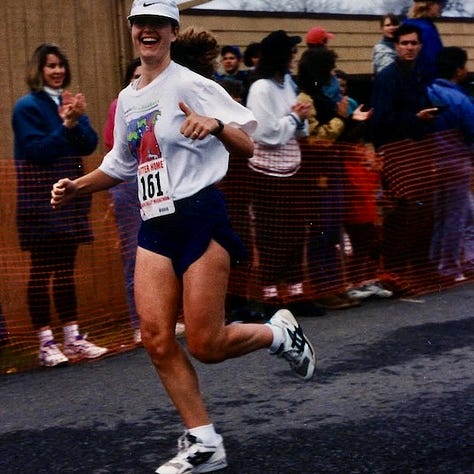
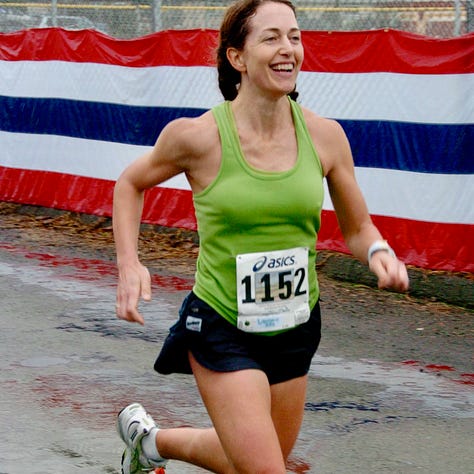
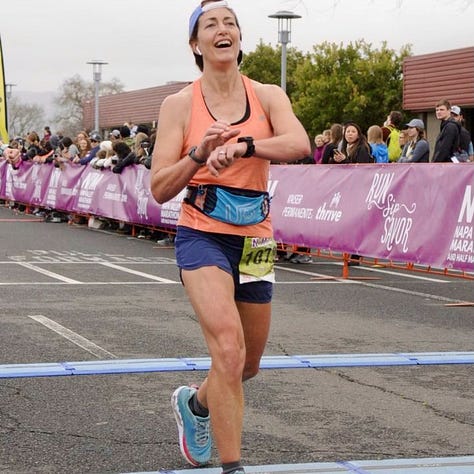
My life has been a series of half-baked projects and short-lived jobs mixed with freelance work, my fledgling career as a journalist fizzling because my heart wasn’t in it. In an alternate reality, someone or something prompted me to take a post-graduate path to become a physical therapist, counselor, or maybe a teacher. In this life, which I wouldn’t change, I chose to focus on the two things I created and love the most: my daughter and son. Throughout, running remained a constant source of satisfaction, independence, pride, and escape. I never stopped, except for brief breaks while postpartum or injured. And though I never had anywhere close to the requisite talent to turn pro, running became my second career as I coached others and covered the sport in media.
The relationship to running, like my body, keeps evolving. I no longer aspire to PR, just to train and show up to races. I could write a whole book about why running stuck and transformed me—and continues to, year by year—and, actually, I’m trying. I’m making progress on a memoir I describe in this new year’s resolutions post.
I plan to repurpose and update this post during the first week of March 2044, a couple of months before I turn 75. I think I’ll give the Napa Valley Marathon another shot that year. Who doesn’t love a 50th anniversary?
Built to last
Do you collect things as you run? Some runners keep their eyes peeled for dropped coins and dollar bills. Others for heart-shaped rocks. One of my friends diligently picks up small bits of trash and posts photos of each run’s trash collection on his Strava.
I’ve never been one to search the ground for collectables or litter, but I do try to focus on the details around me, especially when feeling fatigued and uncomfortable. Noticing the particular characteristics of the route becomes an exercise in mindfulness and helps quash negative thoughts. It’s easier to ignore that tired or achy feeling in my legs if I’m studying tree trunks in an aspen grove and searching for historic carvings or admiring the new buds signaling spring.
Last Saturday, I ran a stretch of the old narrow-gauge Rio Grande Southern Railroad route near Telluride, which is part road, part dirt path. After the railroad went bankrupt in 1931, locals in Ridgway designed a hybrid vehicle that could run on the tracks to carry mail to the outlying communities, along with a few passengers. This railway, which operated until 1952, was called the Galloping Goose because the funny-looking railcars had a horn that sounded like a goose and rocked on the track as if waddling. After it went bust, workers pulled up the tracks and designated the route a trail.
Today, the Galloping Goose Trail (click here for map) provides one of the few relatively runnable dirt routes to run near Telluride (unlike most of the trails in the region’s box canyon, which are so steep, they necessitate hiking). When I run the Galloping Goose, I’m always on the lookout for signs of the old railroad, which have nearly disappeared. Occasionally, however, you can spot old wooden railroad ties and cables.
One segment of the Galloping Goose route is now a dirt road, called Sunshine Mesa Road (officially County Road 63J), which seems completely devoid of its railroad past. It’s just a single-lane road, muddy and icy this time of year and dusty in the summer, on which an occasional car travels and cyclists frequently pedal past. I never expect to spot anything particularly interesting on this stretch, and I normally keep my eyes lifted to admire the southward view of the 12,900-foot Sunshine Mountain.
But on Saturday, running up the familiar road, my eye caught something embedded in the damp dirt that looked too long to be a rock, too squared-off to be a stick.
I stopped and bent over the half-hidden shape. Excited, because I had a sense of what it might be, I used my fingers to dig into the earth and pry the object free. Yes, just what I guessed: an iron railroad spike!
I admired the rusted, pockmarked spike and felt its weight in my hand. It felt nearly as heavy as a full 16-ounce water bottle.
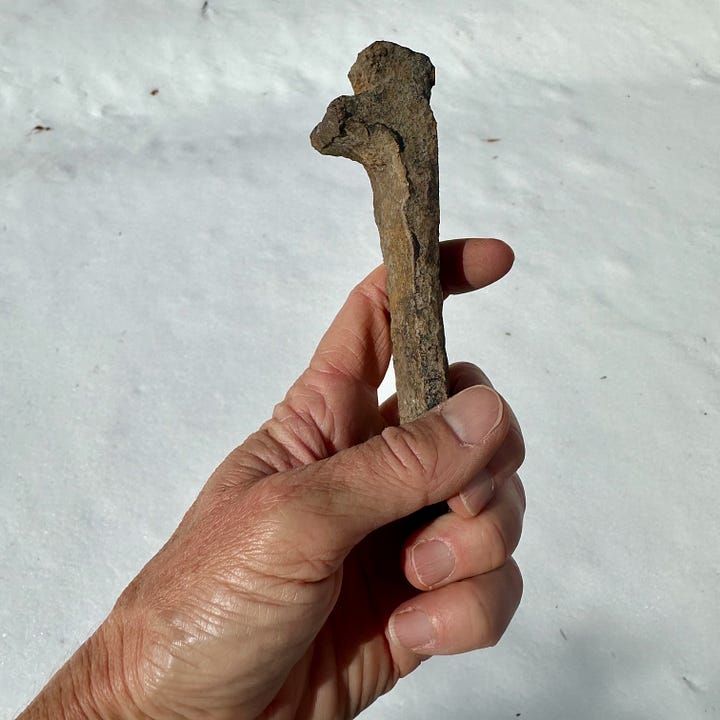
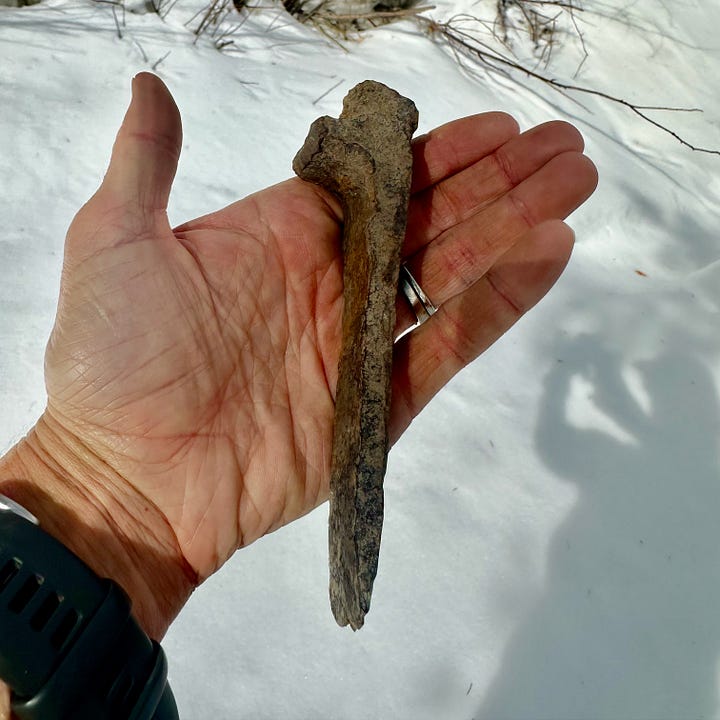
For the next several miles, I ran with the spike in one hand, periodically shifting it to the other hand, and imagined its past. Who pounded it through the steel lines and wooden ties into the ground, and in what year? I pictured the brawny men in boots, flannel shirts, and suspenders. How many trains passed over it? Was Grandpa ever in one on this segment? Probably not; he disembarked a little father north. I pictured him as a teen in the 1920s, hungry and tired and perhaps frustrated by his messy penmanship on the rocking train as he tried to journal during the final leg of a journey from his divorced mother’s new home in Denver to his grandparents’ old home in Telluride.
I studied the spike’s aging and imperfections—its rust and its corroded lines. Why had it alone survived on this road when thousands of other spikes like it were pulled up and carted away to who knows where, perhaps melted and repurposed? I found myself imbuing this inanimate object with feelings, seeing the route from its perspective and wondering what it was like for it to be rediscovered and carried in someone’s hand, to be noticed and appreciated after untold decades in the ground.
I find myself getting increasingly sentimental about objects that last through eras, appreciating that everything has a purpose, place, and story.
I didn’t want to take it with me, because it belongs on this route. “Take only pictures, leave only footprints,” as the Leave No Trace saying goes. But I also didn’t want to bury it again. Ultimately, I decided to place it on top of a trail sign marker, sitting and waiting for some other observant person to notice and admire it and, I hope, leave it near there, too.
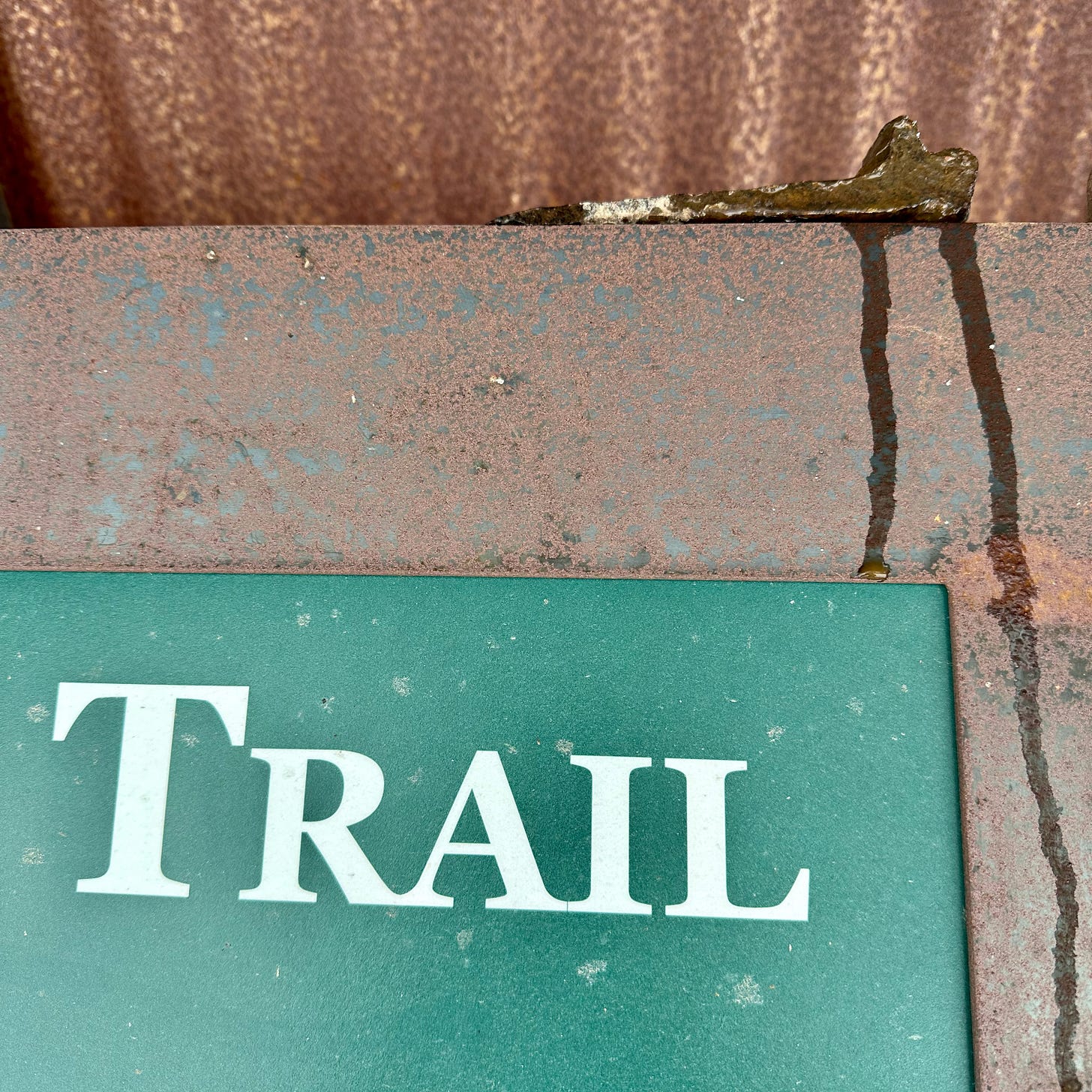
For further reading:
If you dig stories like the one above about objects and places through time, you’ll probably like the novel North Woods by Daniel Mason. Best book I’ve read so far this year.
A runner and podcaster I admire, Cherie Turner, did a nice job with this article on “timeless” trail runners, highlighting what’s special about trail running and how our reasons and goals for running change over time. I’m gratified to be featured in it along with several other women who are strong role models in the sport.
A reminder of what I wrote at the top of this post: I’d love it if you’d share some details about your first real run, and/or anything special you recently found on a run.
If you’d like to support this newsletter but would rather not commit to a paid subscription, please consider a small donation in my virtual tip jar.

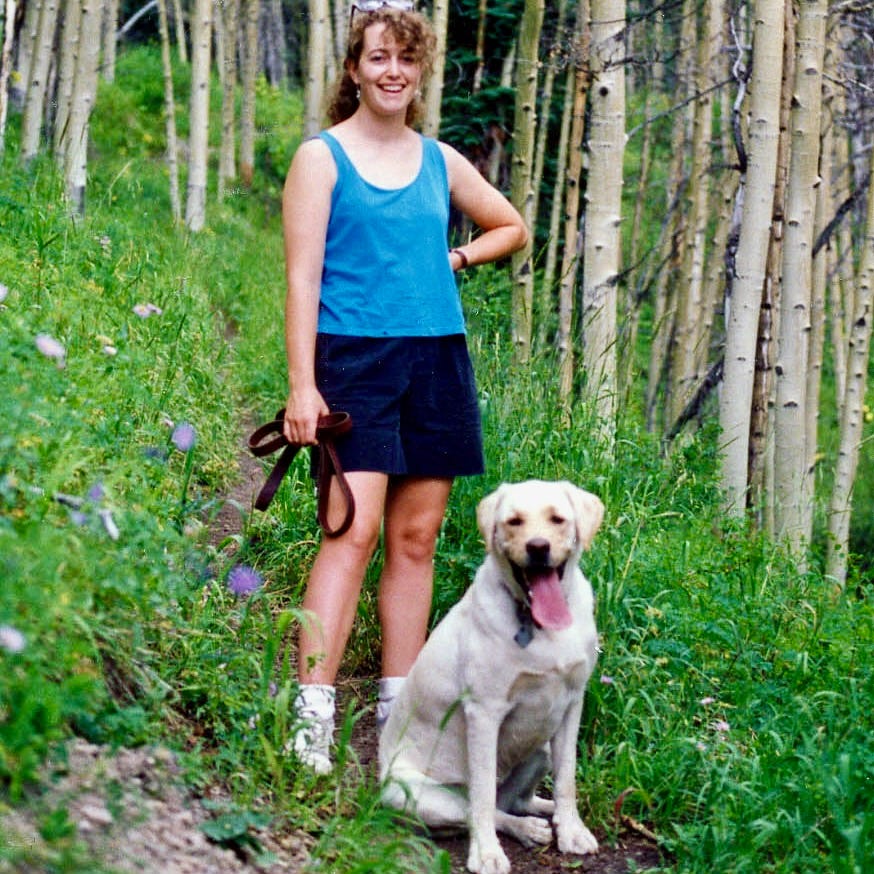

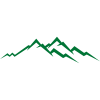


What a glorious story! ❤️
What a great post!!! I’m so glad you left the spike. Great zen lesson. Hope to be right there with you running marathons at 75 🤣💪❤️